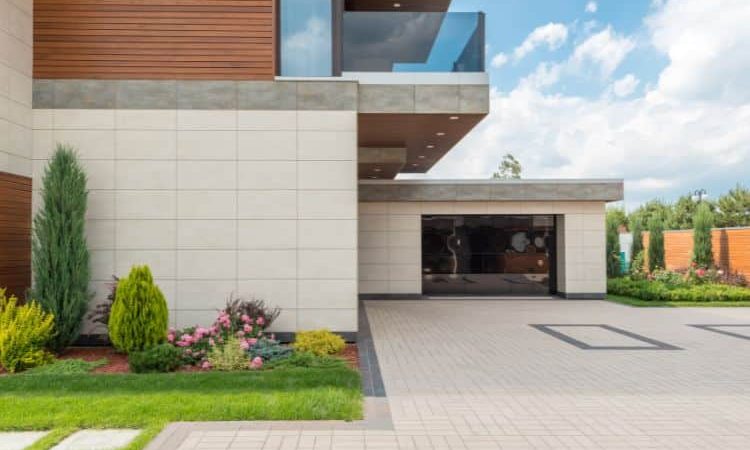When redecorating and sprucing up your home, one of the first things that might come to mind is new flooring. Flooring can make or break a room – if chosen correctly, it can tie in all the colors and textures you’ve picked out while being functional and durable enough to withstand regular foot traffic without needing continuous maintenance. Tile floors are popular for many residential spaces because of their long-lasting performance and aesthetic appeal. Keep reading this blog post to discover more benefits of tile flooring and why you should consider installing it in your home!
Benefits Of Tile Flooring
The history and evolution of floor tiles
Tile flooring has a long and rich history that dates back thousands of years. Here is a brief overview of the evolution of floor tiles:
Ancient civilizations: Tile flooring has been used for centuries in ancient civilizations, such as the Egyptians, Greeks, and Romans. These early tiles were often made from clay and were used to decorate and protect floors in homes and public buildings.
Middle Ages: During the Middle Ages, tiles were primarily used in religious buildings, where they were used to create intricate and decorative patterns. They were also used in the homes of wealthy landowners as a symbol of their status and wealth.
Industrial revolution: The industrial revolution in the 19th century brought about significant changes in the production of tiles. Mass production techniques allowed for the production of tiles at a lower cost, making them more accessible to the general public.
Modern times: Today, tiles are used in many settings, from residential homes to commercial spaces. They are available in many materials, colors, patterns, and styles, making them a versatile and popular flooring choice.
The history of tile flooring reflects the evolution of technology and design, and it continues to be a popular and durable option for many different types of spaces.
Types of tile flooring materials
Tile floors come in various materials, each with advantages, unique properties, and characteristics. Some standard options include:
Ceramic tile:
Made from clay and other natural materials, ceramic tiles are fired at high temperatures to create a durable and hard surface.
Porcelain tile:
Similar to ceramic tile, porcelain is made from clay and other natural materials. However, it is denser and more resistant to moisture, stains, and scratches, making it a good choice for high-traffic and wet areas. Porcelain tile floors are considered high-end tiles and are usually more expensive than ceramic tiles.
Natural stone tile:
Made from materials such as marble, granite, and slate, natural stone tiles add a luxurious and upscale look to any space. They are more expensive than ceramic or porcelain tiles but are known for their durability and longevity.
Glass tile:
Glass tiles are made from recycled or new glass and are available in various colors, sizes, and shapes. They can add a modern and sleek look to any space but are more prone to chipping and cracking than other types of tile.
Wood-look tile:
These tiles are made from ceramic or porcelain and are designed to mimic the look of natural hardwood floors. They offer the warmth and beauty of wood but with tile’s added durability and moisture resistance.
Cement tile:
Cement tiles are made from a mixture of cement, sand, and pigment and are known for their unique patterns and colors. They are durable and resistant to stains but can be prone to chipping and cracking if not properly sealed and maintained.
Benefits of Tile Flooring
Tile flooring is an excellent option for many residential spaces because of its durability, ease of cleaning, and aesthetic appeal. Here are some other benefits of installing tile floors in your space.
Waterproof
Tile flooring is highly water-resistant, making it an excellent choice for kitchens and bathroom floors. It is also resistant to bacteria and germs, making it a hygienic choice for wet rooms. Tile is also a good choice for outdoor spaces exposed to rain or other weather conditions. Natural stone tiles, such as granite and slate, are particularly resistant to water and can withstand the elements.
The material can also be sealed to protect it from further moisture damage. However, it is essential to note that grout, used to fill the gaps between tiles, is more susceptible to moisture and may need to be sealed to protect it from water damage.
Durability and long lifespan
One of the main benefits of tile flooring is its durability and long lifespan. Tile is a hard, sturdy material that is resistant to wear and tear, making it a good choice for high-traffic areas. Additionally, tile flooring can last for decades with proper installation and maintenance. This means it can save homeowners time and money on maintenance costs over the long term.
Easy maintenance and cleaning
Tile flooring is known for being easy to maintain and clean, which makes it a popular choice for busy households and commercial spaces. Many types of tile, such as ceramic and porcelain, are non-porous and resistant to stains. This means spills and accidents can easily be wiped up without special cleaners or treatments. Tile is a smooth and hard surface, which makes it easy to sweep, mop, or vacuum.
Wide range of design options
Tile flooring comes in various colors, patterns, and styles that fit any home or commercial space. From classic neutrals to vibrant colors and intricate patterns, there will surely be a tile option for every taste and budget. Here are a few ways that tile flooring can be used to create different design looks:
Patterns
Tile can be used to create intricate and unique patterns on the floor. This can be achieved through different colors, shapes, and sizes of tile, as well as through the use of different laying patterns such as herringbone or chevron.
Colors
Tile is available in many colors, from neutral tones to bold hues. This allows homeowners and designers to choose a color that complements the rest of the room’s decor and design.
Textures
Tile is available in various textures, including smooth, polished, and rough. This allows homeowners and designers to choose a texture that adds interest and depth to the floor.
Materials
There are several types of tile materials, including ceramic, porcelain, natural stone, and glass. Each material has its unique properties and characteristics, which can be used to create different design looks.
The range of design options available with tile flooring allows homeowners and designers to create a functional and aesthetically pleasing floor.
Eco-friendly and sustainable material choice
Tile flooring can be an eco-friendly and sustainable choice for homeowners and commercial property owners who want to reduce their environmental impact. Here are a few ways that tile can be a sustainable flooring option:
Recyclability
Many types of tile, such as ceramic and porcelain, can be recycled after their lifespan. This means they can be repurposed into new tiles or other products, reducing waste and conserving resources.
Energy efficiency
Tile is a good choice for homeowners who want to reduce their energy consumption. Some types of tile, such as ceramic, are good conductors of heat, which means they can help to retain heat in the winter and keep a space cool in the summer. This can help to reduce heating and cooling costs and improve energy efficiency.
Natural materials
Some types of tile, such as natural stone and clay, are made from natural materials that are abundant and renewable. These materials are often extracted and processed in an environmentally responsible manner, which can reduce their environmental impact.
Chemical-free
Many types of tile, such as ceramic and porcelain, are free of chemicals and toxins, making them a safer choice for indoor air quality.
Tile flooring can be a sustainable and eco-friendly choice for homeowners and commercial property owners who want to reduce their environmental impact.
Installed over various subfloors and surfaces
Tile flooring can be installed over various subfloors and surfaces, making it a versatile option for many spaces. Here are a few examples of subfloors and surfaces that tile can be installed over:
Concrete
Tile can be installed over a concrete subfloor, common in basements and garages. Before installing the tile, it is essential to ensure the concrete is level and in good condition.
Plywood
Tile can be installed over plywood subfloors, often used in residential construction. Before installing the tile, it is important to ensure the plywood is thick enough and in good condition.
Existing tile
Tile can be installed over an existing tile floor if the old tile is in good condition and the surface is level. This can be a good option for homeowners who want to update their floor’s look without removing the old tile.
- The versatility of tile flooring makes it an excellent choice to update the look of any space without removing and replacing the existing flooring.
Ready To Install Flooring Tiles?
Tile flooring pros and cons
Tile flooring has several pros and cons before deciding if it is the right option for you.
| Pros | Cons |
|---|---|
| Durability: Hard and sturdy material that is resistant to wear and tear. | Cold to the touch: May not be desirable in certain climates |
| Low maintenance: Does not require regular waxing or refinishing. | Hard and unforgiving: May not be suitable for children or elderly people |
| Wide range of design options: Available in a wide range of colors, patterns, and styles. | Cost: Can be more expensive to install. |
| Water-resistant: Suitable for wet environments such as bathrooms and kitchens. | Difficult to install: Can be time consuming and difficult to install. |
| Can increase the value of your home: Making it a good investment for homeowners. |
How to choose the best tile flooring for your home?
Choosing the right tile flooring for your home can be overwhelming, considering many factors. Here are a few tips to help you make the best choice:
Your lifestyle
Think about how you will use the space and what lifestyle it will accommodate. For example, if you have young children or pets at home, you may want to choose a harder and more durable material such as porcelain. Some types of tile, such as ceramic and porcelain, are low-maintenance and easy to clean, while others, such as natural stone, may require more frequent sealing and maintenance. Consider your lifestyle and how much time you will spend on maintenance when choosing a tile.
Consider the location
Think about where the tile will be installed and what traffic it will see. For example, tiles in a high-traffic area, such as a kitchen or entryway, should be more durable and resistant to stains and wear.
The style
Choose a tile that complements the overall design style of your home. There are many different colors, patterns, and styles of tile available, so you should be able to find something that fits your taste and the look of your home.
The cost
Tile flooring can vary in price, depending on the tile type, the tiles’ size, and the installation’s complexity. Determine your budget and choose a tile that fits within your price range.
The installation
If you plan to install the tile yourself, be sure to choose a tile suitable for the difficulty level you are comfortable with. Some tiles, such as large or irregularly shaped tiles, may be more challenging to install than smaller, regular tiles.
When choosing the best tile flooring for your home, it is essential to consider the location, style, maintenance, cost, and installation.
Creative and unique tile flooring ideas and designs
Many creative and unique tile flooring options and designs can add interest and personality to any space. Here are a few examples:
- Geometric patterns: Create a modern and trendy look with geometric patterned tiles in bold colors. This can be achieved through the use of different shapes and sizes of tiles, as well as through the use of different laying patterns, such as herringbone or chevron.
- Mix and match: Mix and match different colors, patterns, and styles of tiles to create a one-of-a-kind floor. This can be a fun and creative way to add interest to a space and allow you to express your personal style.
- Mosaics: Create a mosaic floor using small, colorful tiles in intricate patterns. Mosaic tiles can create a unique and eye-catching floor in any space.
- Wood-look tiles: Give your floor a warm and natural look with wood-look tiles. These tiles are made from ceramic or porcelain and are designed to mimic the look of real wood but with the added durability and moisture resistance of tile.
3D tiles: Add depth and dimension to your floor with 3D tiles. These tiles are designed with raised or textured surfaces to create a three-dimensional look.
How to install tile flooring?
Installing tile flooring can be a challenging DIY project. Here are the basic steps for installing tile flooring:
Step 1: Prepare the subfloor – To ensure a successful installation, it is essential to prepare the subfloor properly and ensure it is level. This includes removing existing flooring, filling cracks and holes, and ensuring the surface is smooth.
Step 2: Lay out the tiles – Take time to lay out them and plan where they will go before installing them. This will help you achieve an even look and prevent mistakes from happening.
Step 3: Apply adhesive or mortar – Depending on the tile you’re using, you will need either an adhesive or mortar to secure the tiles. Read the manufacturer’s instructions for the product you are using and follow them accordingly.
Step 4: Install the tile – Start in one corner of the room and work your way to the other, installing each tile one at a time. Use spacers between each tile to ensure proper spacing and alignment.
Step 5: Grout the tiles – Once they have been installed, it is time to grout them. Spread grout along the joints between every tile and let it dry according to the manufacturer’s directions before removing any excess grout with a damp cloth.
Step 6: Seal and finish – Seal the grout to protect it from staining and wear. You may also want to apply a sealer or finish to the tile for extra protection.
Tile flooring installation can be intimidating if you don’t have experience. However, following the proper steps and taking time can help you achieve a professional-looking result.
Hire a professional for tile floor installation
There are several situations where it may be best to hire a professional for tile floor installation. Here are a few examples:
- Complex patterns or designs: If you plan to create a complex pattern or design with your tile floor, it may be best to hire a professional with intricate installation experience.
- Large areas: Installing tile in a large area, such as an entire house or a commercial space, can be time-consuming and labor-intensive. A professional will have the tools and experience to complete the installation efficiently and accurately.
- Subfloor issues: If the subfloor is in poor condition or has dips or imperfections, it may be best to hire a professional with experience in preparing and leveling the subfloor.
- Lack of experience: If you have little to no experience with tile installation, it may be best to hire a professional to ensure the job is done correctly and avoid costly mistakes.
It is a good idea to hire a professional for tile floor installation if you are not confident in your ability to complete the job, if the job is large or complex, or if there are issues with the subfloor. A professional will have the skills and experience to complete the job correctly and efficiently, saving you time and money in the long run. If you are considering installing tiles flooring and need help – we at Handyman Services in DC are here to help!
Conclusion
In conclusion, tile flooring can be an excellent option for homeowners or businesses looking for an attractive, durable, and low-maintenance flooring solution. However, it is important to consider the pros and cons of tile before making a decision. If you decide to go with tile flooring in your home or commercial space, it is best to hire a professional for installation to ensure the job is done correctly. At Handyman Services in DC, our experienced professionals are here to help with all your tile floor installation needs! Contact us today for more information on our services.







